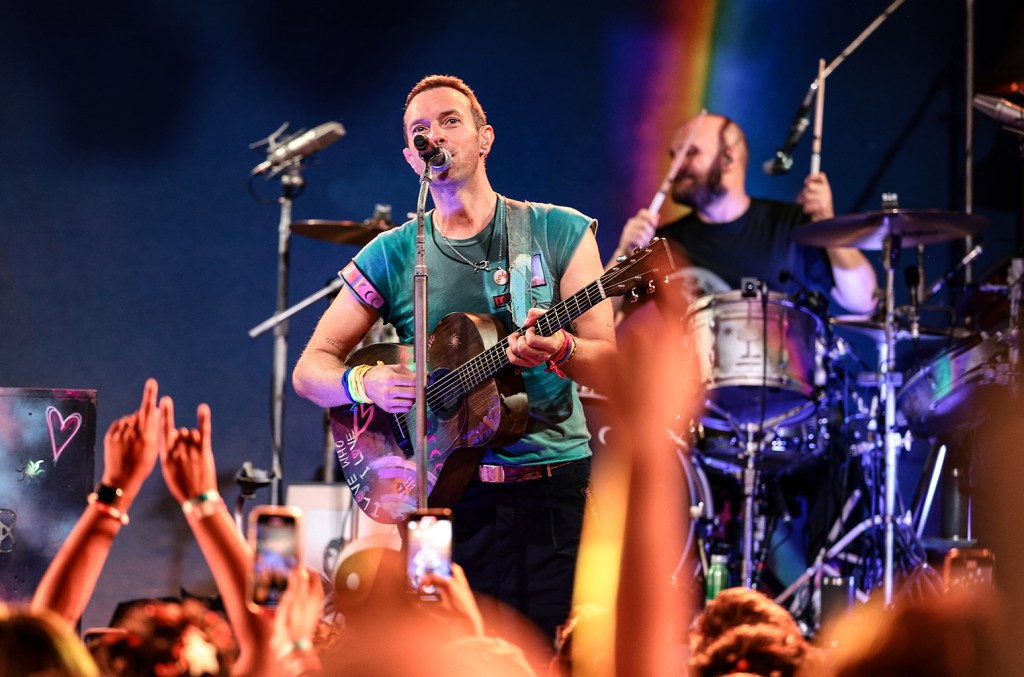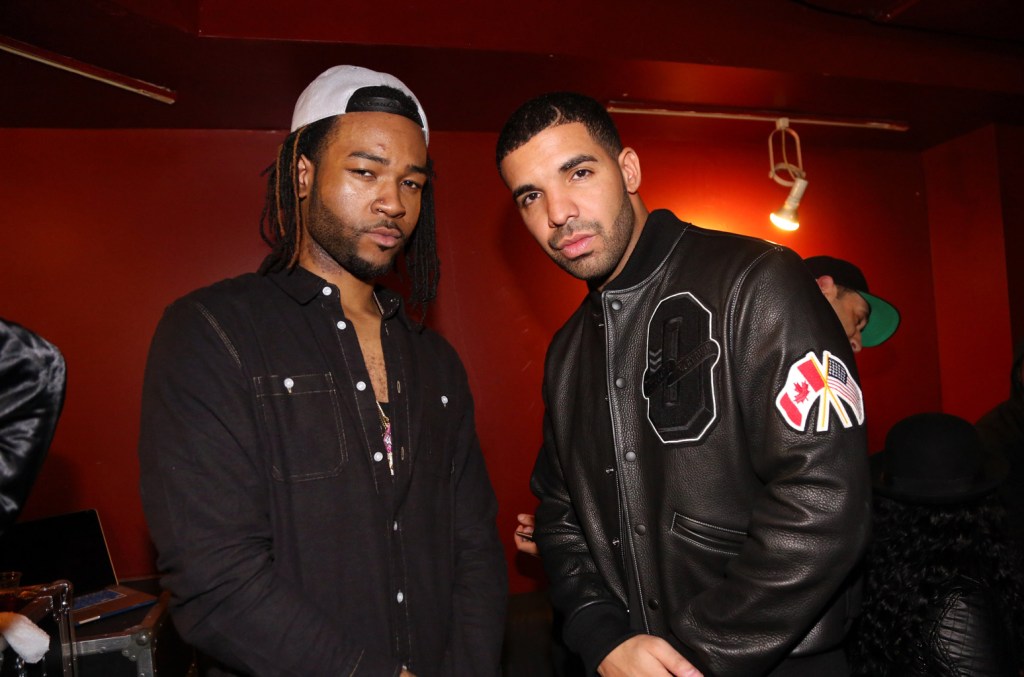Touring
Page: 13
Independent live events tech platform Fever said on Thursday it agreed to acquire the U.K. ticketing and discovery platform DICE, according to a press release.
The news comes a day after Fever announced it raised $100 million in a funding round led by L Catterton and Point72.
The tie-up will strengthen Fever’s standing as a global tech entertainment company and will help the 11-year-old DICE scale by giving it access to the 40 countries Fever operates in, the company’s executives said in a statement.
Fever, which operates a discovery platform and media reaching more than 300 million people in 40 countries, says joining forces with DICE will strengthen its global standing while helping DICE to scale. DICE says it has 10 million monthly active fans and ticket sales have doubled in the past two years, according to the press release.
Trending on Billboard
“We are strengthening our position as the leading global tech player for culture & live entertainment,” Fever’s co-founders Ignacio Bachiller, Alexandre Perez and Francisco Hein said in a statement. “We are firm believers that data and technology have the power to elevate the live music experience — making it more accessible, more personalized, and ultimately more impactful for fans, artists, and venues alike.”
Fever, which combines audience insights, ticketing and discovery tools for promoters and venues, was most-recently valued at $1.8 billion in 2023, Music Business Worldwide reported. The company partners with festivals, such as Primavera Sound, Rock in Rio Lisbon and Pitchfork, as well as independent venues like Clapham Grand.
DICE users will be able to continue using the platform “exactly as they are today,” according to the release.
LionTree Advisors LLC served as the financial advisor DICE, and Wilson, Sonsini, Goodrich & Rosati LLP served as their legal counsel. Fever Labs Inc. was advised by Davis Polk & Wardwell LLP and Morrisson & Foerster LLP.

When Lady Gaga asked Gesaffelstein to appear during her Coachella 2025 weekend one headlining show, the French producer’s answer was obvious: “oui.”
“Of course we had to say yes,” says Alexandra Pilz-Hayot, the founder and director of Savoir Faire, the French company that’s long managed the electronic producer. “He really wanted to be there with her for the launch of the tour.”
Explore
Explore
See latest videos, charts and news
See latest videos, charts and news
His team worked with Gaga’s to figure out logistics like where the artist born Mike Lévy would stand onstage and what equipment he’d use. Beyond that, “we didn’t really ask that many questions,” says Pilz-Hayot.
Trending on Billboard
Gesffelstein and his team arrived at Coachella, surprised to see that only one name was on the list of guest artists for Gaga’s Mayhem Ball: Gesaffelstein.
“We literally asked [Gaga], ‘But are there other guests?’” says Pilz-Hayot.
“No, no, you’re the only one,” she told them.
“We were like, ‘Oh my god.’”
Hours later, Gesaffelstein was onstage alongside Gaga and her fleet of dancers, performing for the tens of thousands of people on the field and the millions more watching around the world via livestream.
“GESAFFELSTEIN, OH MY GOD IT’S GESAFFELSTEIN,” at least one person in the crowd screamed when the producer appeared onstage in his signature all-black everything — trousers, jacket, gloves, shimmering mask formed in the shape of his face and hair — at the start of the show’s third act. The slender producer towered behind musical equipment held up by shimmery black pillars, as he and Gaga performed their sexy, funky, playful pop romp “Killah,” a collaborative track from Gaga’s March album, Mayhem.
The moment was a figurative exclamation point on an unrelenting year. The last 12 months have contained Gesaffelstein collaborations with Gaga and Charli xcx (Brat‘s “B2b” and “I Might Say Something Stupid”), the release of his own third studio album, Gamma, and the launch of the tour behind this album, a run that began in April of 2024 on Coachella’s Outdoor Stage and has hit global festivals and standalone arenas like Los Angeles’ Kia Forum.
The tour has indulged the dark, minimalist, deliciously intense and undeniably tantalizing world the producer — long a revered figure of the electronic underground — has erected with both his tough as nails industrial-leaning electronic music and corresponding aesthetic, with this tour easily being one of the best electronic shows on the road in 2024 and 2025.
Julian Bajsel
Julian Bajsel
The tour’s production design was conceived by Lévy and Pierre Claude, who’s worked with the artist for the last 12 years, since the tour for his 2013 debut, Aleph. In his role as production and lighting designer, Claude is in charge of designing the show’s set and lighting schematic while coming up with the ideas it takes to make it all hit hard while also avoiding de facto electronic live show elements like fire, confetti and soaring LED screens.
“Mike is very involved with his own tour for sure, from the design and the story,” Claude says. “For this, he wanted something massive — a big set piece, very theatrical, no technology or automation or anything futuristic, just a theatrical set. And black, of course — everything is black with Mike.”
“You have one person on stage who’s doing everything with machines,” adds Pilz-Hayot. “So it’s trying to make it almost like a ceremony. That’s always been the brief all his life. Of course, we wanted something bigger, that had the spirit of something that would be monumental.”
(Adding to the mystery of it all, no one has interviewed Lévy since circa 2014, a streak that would not be unbroken for this story. Pilz-Hayot explains that “he’s always been very protective of himself; what he wants to share with the audience is never the ‘behind the scenes.’”)
Together, the team conjured a design that puts Gesaffelstein on a raised podium, bookended by his equipment and structures fabricated in the shape of long black crystals, a sort of phantasmagorical flourish in an otherwise tidily designed structure meant to evoke the theater. The setup includes between six to eight towering pillars (depending on the size of the stage) with Gesaffelstein and his podium placed atop a set of stairs. Altogether, it gives the feeling that he’s playing from within a sort of Blade Runner-style Pantheon — and not even necessarily performing from within the set, but being part of it.
“That’s why he’s wearing a mask,” says Claude. “It’s not like a DJ or performer on stage. Mike wanted to be part of the design.”
The set was built in Burbank, Calif., given the city’s proximity to Indio, where Coachella happens. This routine was the same as for Gesaffelstein’s lauded tour behind 2019’s Hyperion, which also began at the festival. “We started at Coachella every time on the Outdoor Stage,” Claude says, “which is very stressful for us, because we have no rehearsals before.”
Did everything at Coachella 2024 go according to plan, despite having no official run through? Claude considers it: “Yes, actually. Yes.”
It helps that this current show is easier to pull off than the one for Hyperion, given that it’s a static piece that involves less technology and moving parts.”We just wanted to work out the lighting with music, so we don’t need technology besides lights and music,” Claude continues. “The plan was to do something very simple, but intense.”
If you’ve stood in front of the stage on this tour, it’s hard to deny the show’s ferociousness, which ramps up over the course of the hour-plus show as Gesaffelstein manhandles his synthesizer. Throughout, he’s bathed in washes of mostly white light and surrounded by lasers as the music builds to a place of pure pummeling. His only interaction with the crowd is when he briefly turns to face forward, extends an arm and wags his middle and index fingers to make a sort of “come with me” gesture. Adding to the intrigue is that it’s impossible to read his face, given the aforementioned mask.
This costume piece, which Pilz-Hayot says was partially inspired by the themes of beauty and sin in Oscar Wilde’s The Picture of Doran Gray, became part of the Gesaffelstein canon on the Hyperion tour. This time, however, the eyes of the mask glow unsettlingly, an effect that adds the surreal feel and helps the show achieve its intended sci-fi mood — even if it does also obscure the artist’s objectively perfect face.
“When he told me he wanted to wear a mask for the Hyperion tour I was like, ‘What the f–k?’” recalls Claude. “He’s like, one of the most beautiful artists in the world, and he wants to hide his face? I was a bit disappointed, because he looks so cool onstage smoking cigarettes or for an hour [while he played]. But when he came for the first show with the mask on, it was like, “What the f–k — It looks so good!’”
“It’s not an artist anymore,” says Pilz-Hayot. “It’s a character.”
On both aesthetic and functional levels, the mask also adds to the intensity. While it’s thin in design and equipped with a fan, Claude reports that “it’s difficult for him to hear.” He uses an in-ear monitor “like an F1 driver,” but the situation is exacerbated by the fact that “he can’t see a lot. He can see like, the first row.”
But “for him, it doesn’t matter,” Claude continues. “His music is intense, so he doesn’t want to have a good time on stage. He just doing his job.”
Julian Bajsel
Julian Bajsel
In terms of lighting, the one moment of color comes during the slinky, G-funk inspired 2013 classic “Hellifornia” during which the stage is bathed in deep red light. “We really wanted to have a dirty strip club mood,” Claude says of this color choice.
Given the emphasis on simplicity, Claude worked to “hide all the technical stuff.” Lights, lasers, cables and even musical equipment are hidden behind columns and under the steps, which are in fact just props and unable to support any weight, making them easier to transport. With no technical elements visible, Claude says the show is almost the “total opposite” of the current lights and lasers bonanza that Gesaffelstein’s friends Justice are currently touring with.
The producer and his 10-person touring team have brought the show to dance-focused festivals around the world. U.S. stops included San Francisco’s Portola, San Diego’s CRSSD, Miami’s Ultra Music Festival and last month’s EDC Las Vegas. Given that some of these dance fests have stage that are fantastically shaped liked butterflies and flowers, Claude says it’s often “very difficult” for him to adapt the minimalist show to the whimsical surroundings. (To wit, it was a striking juxtaposition when Gesaffelstein played EDC’s lotus flower-shaped NeonGarden stage as a fireworks finale lit up the sky behind him.)
“There is not a place that really suits him,” says Pilz-Hayot. “He’s obviously very different from what happens in the EDM scene globally, musically or in live production.”
Still, the dance festival world has warmly welcomed him, and Pilz-Hayot says the team received many show offers after the 2024 Coachella debut. (This type of organic marketing is helpful, given that he doesn’t speak publicly or even have an Instagram account.) His sound also makes it possible for him to exist at major multi-genre festivals at Coachella, Paris’ We Love Green (where he plays this Saturday, June 7) and San Francisco’s Outside Lands, where he plays in August, while making him a fit for other genre-focused events, like Germany’s Rock am Ring and Rock im Park metal festivals — where Gesaffelstein played in 2014, taking the stage after Iron Maiden.
“We were the last act,” says Claude. “The metal fans walked towards the exit and Mike was playing there, and they all stopped and really enjoyed [the performance],” with Gesaffelstein’s heavy canon sharing obvious DNA with the hard, loud and head-banging metal realm.
This ability to exist across worlds while also doing something uniquely his own has arguably been the draw for pop stars like Gaga, Charli and The Weeknd, the latter of whom collaborated with Gesaffelstein on 2019’s “Lost In the Fire.”
“He’s so outside of trends and really wants to follow his path and his artistic proposal,” says Pilz-Hayot. “In a way, he’s been doing this same approach and very particular sound since day one, so the way he produces is so specific that people just want Gesaffelstein’s stamp on their music.”
But those bewitched by the darkness of his sound should not discount the pop sensibility that also lies within. “He has a very strong sense of melody and pop,” continues Pilz-Hayot. “You hear it on the Charli song and the Gaga song, especially on the track ‘Killah.’ It’s the meeting of two artists who really understand each other musically. It’s been the easiest collaboration.”
But you will not hear the track or any of his other pop collabs (which include an official remix of Gaga’s electro smash “Abracadabra”) in his current setlist, which instead pulls from his own catalog, and builds to a place that feels like blissfully getting punched in the face with a battering ram of drums. He’s got festival dates on the calendar through mid-August, then, Pilz-Hayot says, “I guess all he wants is to be back in the studio and making new music. You never know what happens next… but clearly a new album would be the next target.”
When this new album is ready to tour and further build out the dark kingdom of electronic music’s so-called dark prince, fans will be ready, and the team will be too.
“I’ll be touring with the with him forever,” says Claude. “He’s a good friend, and I f–king love his music.”
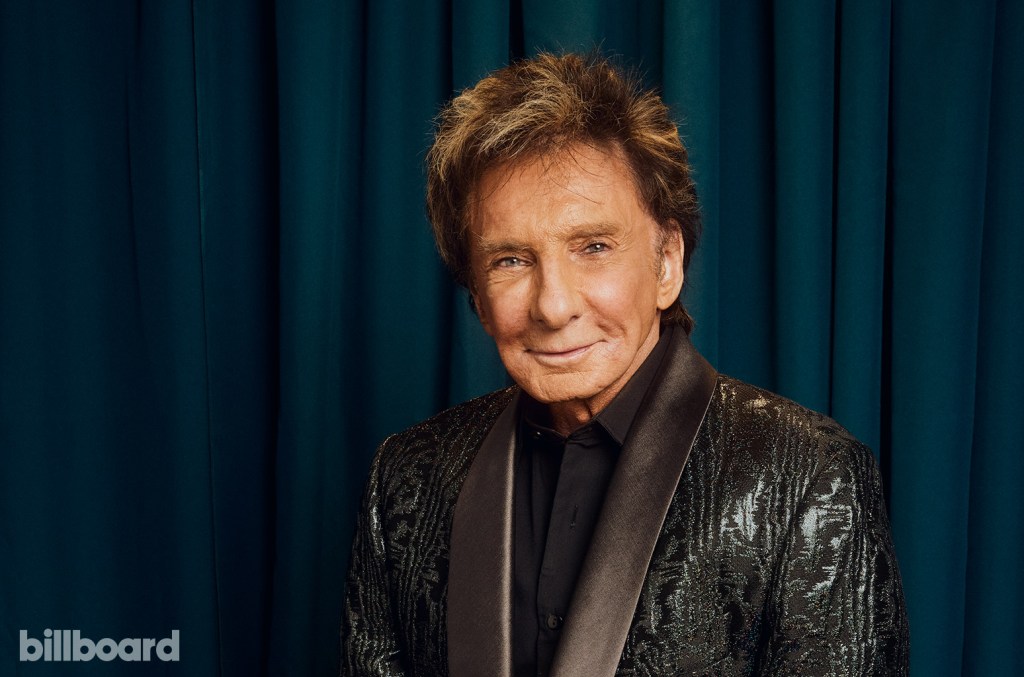
“My mother always wanted me to be a doctor,” Barry Manilow quipped on stage Tuesday (June 3) night at Detroit’s Little Caesars Arena. “She would be so proud!”
Manilow indeed became a doctor during his Detroit tour stop, when six cap-and-gowned faculty members from Chicago’s VanderCook College of Music (the only U.S. school that specializes in teaching music educators) presented him with an honorary Doctor of Music Education honoris causa. The honorary degree, according to VanderCook President Kimberly Farris, recognized “your enduring dedication to music education,” which, she added, “resonates deeply with our mission.” The degree specifically saluted the Manilow Music Project, which he says has spent $10 million during the past 15 years providing musical instruments to schools and honoring music educators. On Tuesday, Manilow presented a $10,000 grant to a teacher from Detroit’s Cass Technical High School.
Donning his own cap and gown and accepting the degree, Manilow explained that “the VanderCook College stands for everything I believe in. Their commitment to music teachers and my passion for getting playable instruments for young people go hand in hand. That’s why it really speaks to me.” He gave special thanks to his drummer, Yolandus “YL” Douglas, for spearheading the honor.
Trending on Billboard
“This is such a meaningful honor,” Manilow continued. “I’ve gotten awards before — Emmys, Grammys, People’s Choice Awards. Most of them were always honoring me as a singer, songwriter and performer, and they were always great. I’m always so grateful for them. But this is the first time that anybody has acknowledged me as being a musician, so thank you all…I’ll never forget this.” Manilow then tossed his mortarboard into the crowd as his band played “Pomp and Circumstance.”
The show was part of the 81-year-old Manilow’s continuing The Last Concerts series he’s playing in “these cities that have been so supportive” during his 52-year recording career. Prior to the Detroit stop he told Billboard that the endeavor has put him in a reflective space. “It’s like, ‘What? Am I the only one left?’” he says. “It’s Billy Joel, and Elton (John) is not well and Rod (Stewart) and Neil (Diamond). Diana Ross is still in great shape I think. There must be only a handful of people in my world that are still there. I’m still healthy. I’m strong and I’ve still got my voice and my energy. The night I can’t hit the F natural on ‘Even Now,’ that’s the night I throw in the towel. But I can still do it.”
Though he “never got to know” Joel, Manilow adds that he wishes that Piano Man well in his struggle with the brain disorder Normal Pressure Hydrocephalus (NPH) that has taken him off the road. “Oh, it’s so horrible, so horrible,” Manilow says. “It just broke my heart when I heard about Billy Joel. I’m such a fan of his work. I really hope he’s able to get back to it.”
Manilow’s work, meanwhile, isn’t just onstage these days. By the end of the summer Manilow hopes to release a new album, his first since Night Songs II in 2020. “This’ll probably be my last album,” he notes, adding that, “I’ve been working on it for a long time…for so long that the style of music has changed. [laughs] I had to go back and redo (the songs) so they sounded a little more contemporary. I had to take all the strings out, all the background vocals out ‘cause they don’t do that anymore. They don’t use strings and background vocals and all that. Even I heard that it sounded dated, so we had to go back and redo it.”
The result, he says, is “a Barry pop album. I think people who like what I do will like this album; I don’t know about everybody else who likes today’s music, but it’s a solid album.” Manilow adds that he’s not trying to compete with the current crop of chart toppers and Grammy winners.
“The songwriting has changed,” he notes. “Young people don’t write the way I was trained to write. There’s no verse which goes into the chorus which goes back to the verse which goes to ending, and you change keys. They don’t do that. They start the song and then they just…it feels like a run-on sentence to me. I can’t find the hook. I can’t find the chorus. It just keeps on going, and then it ends. That’s not what this album is, and that’s not the way I know how to write, and I think my contemporary songwriters and people I work with would say the same.”
This year, in fact, marks 50 years since Manilow scored his first Billboard Hot 100 No. 1 hit, “Mandy,” while January will mark 50 years since his second No. 1, “I Write the Songs,” which was penned by Bruce Johnston of the Beach Boys. Both were recommended to him by Arista Records then-chief Clive Davis, and Manilow laughs as he recalls their professional relationship. “Every time Clive gave me an idea I would turn it down — every single time I would turn it down.” His objection to that one, in particular, was pointed: “I can’t sing a song where it says, ‘I write the songs’; people will think I’m this egomaniac. I won’t do it! Same thing with any of the other ones. I turned them all down. But Davis was relentless; ‘You’ve got to try it. You’ve got to try it!’ So I would put my arranger hat on and crawl into these songs and figure out how I can do these songs so I can be proud of it.”
“I Write the Songs,” of course, remains cemented into Manilow’s setlists, including his “lifetime” residency at the Westgate Las Vegas Resort & Casino, which resumes on June 12. There’s no end date in sight, he insists, but having already done a One Last Time! tour back in 2015 Manilow insists that he’s not kidding about each stop being the final performance in each city.
“It’s a bittersweet experience for me because I know that I’m not coming back here and (the fans) know I’m not coming back here. And when I finish and I say ‘goodbye’ it is goodbye,” he says. “I’ve never felt that before. Usually I know that (on) the next tour, I’ll probably come back here. But this time I know I’m not coming back to these cities. I’ve been doing this for so many years, and I’ve done these cities over and over and over, but this is it.”
At the inaugural SXSW London taking place June 2-7, with nearly 900 speakers participating in some 500 sessions, one specific topic was of sharp relevance to the music industry — indeed, every industry and every attendee.
The climate crisis.
The past year saw extreme weather drive fires across the music capital of Los Angeles; a cyclone prompt cancellations of some two dozen live events in Australia in a single week; and more than 50 festivals in the U.K. either postponed or canceled due to forces including higher weather-related insurance costs.
“Climate change is not some distant threat,” said Leila Toplic, chief communications and trust officer of Carbonfuture, which provides verification of efforts to remove carbon from the atmosphere.
“The business case for taking action is still there,” remarked Helen Clarkson, CEO of the the Climate Group, a non-profit whiich has worked with more than 500 multinational businesses in 175 markets. (She spoke during a panel provocatively entitled “Canceling Sustainabilty,” about efforts to purse a green agenda in the face of new anti-environmental rhetoric in Washington, D.C.)
SXSW London organizers tapped the Bellwethers Group, which is focused on building a green economy, as its the official sustainability partner and the company hosted several days of panels at the Nature and Cimate House.
One of those panels focused on the role that advertising and public relations agencies can play in guiding businesses which claim to be concerned about the climate. Lameya Chaudhury, head of social impact for the mission-driven creative agency Luck Generals, remarked: “The question we’re asking of clients in 2025 is — did you really f–king mean it?”
SXSW London builds on the four-decade legacy of the South By Southwest music, arts, film and tech conference and festival launched in Austin, Texas, in 1987. Two years ago, Penske Media (the owner of Billboard) took a majority interest in the company which now presents conferences in Austin; Sydney, Australia; and now in the formerly industry district of Shoreditch in East London.
The climate-focused discussion that hit closest to home for the music industry took place Wednesday morning. Billed as “The Future of Sustainable Live Events,” it was moderated by Claire O’Neill, CEO and co-founder of the international nonprofit A Greener Future and co-founder of green energy specialists, Grid Faeries.
Panel participants included Sam Booth, director of sustainability for AEG Europe; Alex Bruford, founder, managing director and agent with ATC Live, whose clients include The Lumineers and Fontaines DC; and Mark Stevenson, co-founder of CUR8, whose mission is to remove 1 billion tons of carbon a year from the atmosphere.
Here are five key takeaways from their discussion.
Follow The Leaders
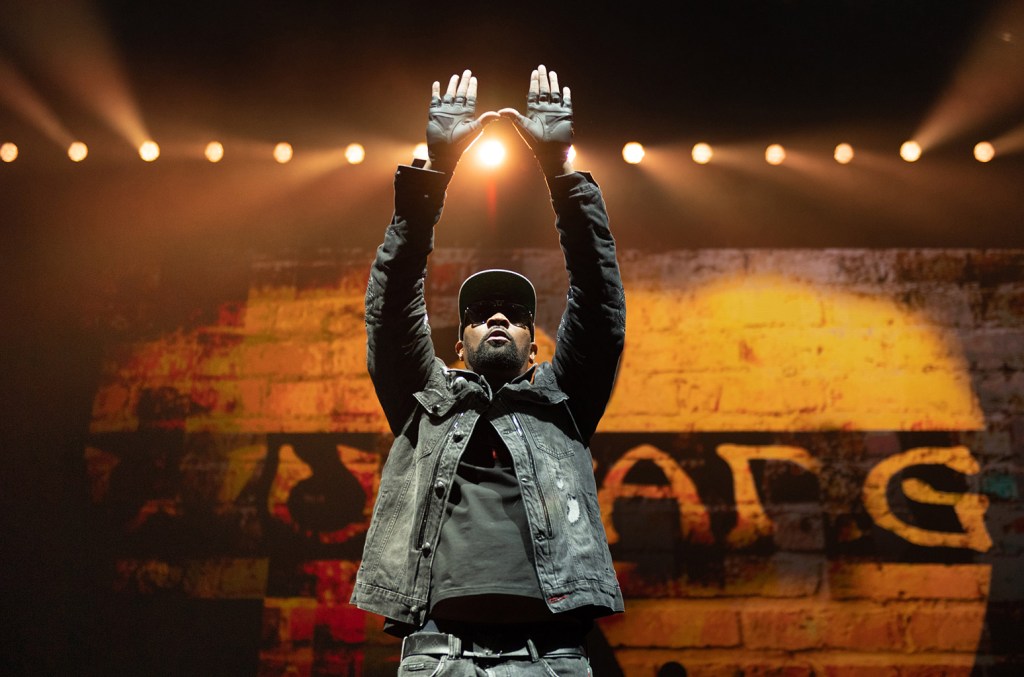
For Wu-Tang Clan superfans with money to burn, snagging a premium ticket for their upcoming tour won’t just buy killer seats, but gain them entry to an exclusive pre-party offering an immersive look at the kung-fu and iconography of the famed Staten Island hip-hop collective.
“We’re really being thoughtful from a pricing perspective,” Ben Duvdevani, co-founder of One More Time VIP, says of the Shaolin Temple Preshow Party ticket package, which offers entry to a time capsule-style exhibit showcasing rare Wu-Tang fan memorabilia and 3D video projections of classic films like The 36th Chamber of Shaolin and Five Deadly Venoms that inspired albums like Enter the Wu-Tang (36 Chambers) and Wu-Tang Forever.
“Packaging premium seats with these programs is enticing for the fan and helps push inventory. It helps push the bots out of purchasing premium inventory” and, he adds, “helps conversion for VIP.”
Trending on Billboard
The Shaolin Temple package is just one example of the lucrative VIP concert business in 2025, which is poised for a comeback thanks to a new generation of fans looking to invest in artist-centric experiences.
“There’s a ton of business out there because there are so many artists on the road right now, and so many artists at all levels trying to create something memorable for their fans,” adds Duvdevani, whose company is handing VIP packages for about 300 tours this year including Shaboozey, Sabrina Carpenter, Teddy Swims and HAIM.
It’s an impressive feat for an industry hit hard by COVID-19. The VIP business was born in the 1990s thanks in part to the work of New Yorker Shelley Lazar — the beloved “Ticketing Queen” who convinced iconic artists like the Rolling Stones, Paul McCartney and The Who to let her build out premium offerings for diehard fans she came to know on a first name basis — and it continued to grow in the new millennium as touring exploded. By the early 2000s, most artists were offering fans some type of VIP product, from meet and greets to destination concerts, facilitated and produced by a new generation of VIP companies with names like Fresh Beats and CID.
Beginning in 2017, many of the VIP companies started to consolidate. Several of them came under the NFL-backed firm OnLocation, which was purchased in March 2020 by Endeavor — just weeks before the concert business shut down for more than a year during COVID-19. During the pandemic, one popular U.K. VIP and hospitality company, Pollen, was forced to file for bankruptcy and later dismissed most of their staff.
Many VIP executives used the pandemic period to leave Endeavor and begin serving out their non-competes. By 2022, a new crop of companies founded by these execs started popping up, including One More Time, which won the contract to build the Shaolin Temple Preshow Party for Wu-Tang Clan’s upcoming Final Chapter North American arena tour. “It’s a bespoke preshow activation, where there’s going to be some surprises and a really special experience for fans,” Duvdevani tells Billboard of the exhibit that was created for the group’s 27-city tour. The Shaolin Temple pre-party is being packaged with front section floor tickets and priced at $740 a piece all-in.
VIP conversion has become increasingly common as more artists embrace platinum ticket pricing and higher prices for front row seating inventory as a response to secondary ticketing prices. Coupling these high-end tickets with VIP add-ons has become an important way to move aggressively priced inventory.
That need has led to one major change in how VIP packages and fan clubs are operated. Prior to the pandemic, many VIP companies operated ticketing systems that pulled tickets off the Ticketmaster or AXS platform, a practice that has largely ended.
“We want to put our best foot forward to make sure everyone’s winning, so we’re not taking anything off platform,” Duvdevani says. “Promoters are still getting the sale, and we’re also being mindful of that inventory. We don’t want to hold up a sell-out.”
Eddie Meehan got his start running VIP access company A Wonderful Union in the early 2000s before eventually selling to OnLocation and subsequently launching Please & Thank You. Meehan said his new company’s clients include Backstreet Boys, Alice Cooper, Melissa Etheridge and Peso Pluma.
“You have to be creative because many artists simply aren’t interested in doing meet and greets, it’s very taxing,” says Meehan, noting that he’s found success creating activations for artists like Aimee Mann, who offered VIP package holders a preshow soundcheck performance with songs not performed during the concert. Fans of another Please & Thank You client, *NSYNC, were invited to a restaurant for a private dumpling making party.
“We’ve had a lot of success bringing in brands to underwrite some of these events, which means more money in the pocket of the artist,” says Meehan, who has struck deals with Amazon Music and eBay Motors. “I tell brands they won’t get the same exposure to 600,000 fans they would get on a tour, but they do get access to 3,000 diehard, loyal fans who will evangelize your brand.”
Duvdevani added that VIP offerings shouldn’t be limited to established artists, pointing to newcomer Jessica Baio, a 23-year-old singer-songwriter who hired One More Time to run a VIP meet and greet program for her first headliner club tour.
“I feel like such an important part of going and performing live is also getting to meet people face to face,” Baio tells Billboard. “It’s something I wanted to offer to people and it’s just one of my favorite parts of the night, getting to physically hug people and meet them in person and allow them to share why my songs have touched them.”
While young artists like Baio have found success with a meet and greet program scaled to fit their tours, VIP industry luminary Dan Berkowitz, who is widely recognized with having helped create the VIP business through his firm CID, which he sold in 2016, says artists should only offer VIP experiences to fans if those experiences promote an “authentic connection.”
If the artist is committed to making the experience work, says Berkowitz, who launched his new company, 100x Hospitality, in 2022, there’s always potential for success.
“There is always going to be a strong demand for compelling experiences and people are always going to want to feel connected to the music that they love and to each other,” he says.
With Tha Carter VI set to arrive on Friday (June 6), Lil Wayne is plotting a North American tour to bring the album with him on the road later this year. Announced on Tuesday (June 3), Weezy’s Tha Carter VI Tour is slated to kick off on Friday with a celebratory show at the iconic […]
Drake has expanded his upcoming summer tour with his newly-announced $ome $pecial $hows 4 UK run through the United Kingdom and Europe with PARTYNEXTDOOR. Earlier this year it was announced that Drake would headline Wireless Festival in London on all three nights (July 11-13), and the Canadian superstar will now expand his run to include […]

A Honduras-based hotel owner says he’s reviving the Fyre Festival brand alongside Billy McFarland as a pop-up experience at his island resort, marking the latest twist in a bizarre saga.
Heath Miller, a former New York concert promoter and one-time manager of Webster Hall in Manhattan, says he reached an agreement with McFarland to stage a 300-to-400-person Fyre Resort Pop-Up at his hotel, Coral Villa Utila, located on the island of Utila, one of Honduras’ famed Bay Islands in the Caribbean. The event will run from Sept. 3-10.
Tickets are cheap: Just book a room at Miller’s 25-room resort, and a pass for Fyre is included. Rooms start at $198 per night for singles, $329 for couples, $399 for triples and $449 for the hotel’s four-bed room.
Trending on Billboard
Miller is quick to point out that the September event is not being billed as Fyre Festival II, adding that tickets from that event won’t get you access to the Fyre Resort Pop-Up, which he says will be more low key than what had been planned for Fyre’s comeback festival in Playa Del Carmen, Mexico. There will be live entertainment, although Miller notes that he hasn’t secured any talent yet and says the festival won’t have a large budget or a splashy lineup.
“This event isn’t for an artist looking for a $100,000 fee,” he says. “Honestly, for me, this is a promotional vehicle for my hotel and it plays into my grand plan — I’m working on writing a book on my music career, and the book was supposed to end last June [with a story about] Jack Antonoff in Asbury Park. But instead, I guess Fyre is going to be the final chapter of the book.”
In Miller’s estimation, the controversy around the disastrous 2018 festival — which garnered international headlines when ticketholders arrived on a Bahamian island to find that the promised luxury event had not been realized — may ultimately be the biggest draw.
“Fyre Festival is a tainted brand that obviously has a horrible reputation, but at the end of the day, this brand can create press and awareness better than Coachella can,” he says.
Miller has been managing the hotel since 2019 for his late father, who bought the island resort in the 1990s. He says his idea for the Fyre pop-up is partially inspired by Sixthman, the concert and cruise ships company owned by Norwegian Cruise Lines that stages music-themed cruises for artists like Lindsay Stirling, Joe Bonamassa and comedian Nate Bargatze.
“Originally, I wanted to do fan club and events here,” on Utila, says Miller, who hoped to match music with scuba diving and water excursions. He adds, “Fans want to engage with the artist in unique and different ways and see them play in unique settings,” noting that the Fyre pop-up presented a rare opportunity to build proof of concept.
Under the terms of their agreement, McFarland maintains full ownership of Fyre, and Miller will serve as venue manager and site host.
Miller says he’s already secured permits and local approval for the Fyre Resort Pop-Up and said he hopes the famed festival brand creates some positive buzz for Utila. The island is popular year-round with scuba divers and snorkelers who visit the island to swim with sharks and explore the 600-mile-long Mesoamerican Barrier Reef, but it isn’t as well-known as other Caribbean destinations like Barbados, St. Lucia, and the Turks and Caicos Islands.
Miller adds he’s well aware of McFarland’s past failures with Fyre Festival, most famously with the disastrous first edition in 2018, which left hundreds of fans temporarily trapped on Grand Exuma island. McFarland masterminded the event, according to the FBI, convincing fans to shell out thousands for luxury accommodations that turned out to be emergency tents and gourmet meals that were little more than cheese sandwiches.
McFarland went to prison after admitting to stealing $26 million from investors for the event and has been working to repay them since being released from prison in 2022 after serving four years of his six-year sentence. While serving in solitary confinement, McFarland came up with the idea for a sequel to Fyre, which he had hoped would repair his image, and bounced around different sites in the Bahamas and Mexico before landing on Playa del Carmen near Cancun. McFarland ultimately hired Mexican firm Lost Nights to produce the event and staged a press conference on March 27 with local officials to highlight it.
However, things went south in April when city leaders from Playa del Carmen announced that no permits for Fyre Festival had been issued in the seaside town. McFarland responded by releasing images of permits that he said proved Fyre was happening, but he later pulled the plug on the event and refunded ticket holders. On April 24, McFarland announced he was selling Fyre’s assets and intellectual property and had reached an agreement with a streaming service to license the name.
Miller says McFarland retains the name for Fyre and has a core team of a half-dozen individuals working with him, including his long-time partner, Michael Falb.
“I’m well aware of Billy’s past and I think it’s important that we are transparent about what happened. I personally met with the mayor of Utila when securing the permits for this event and even showed him the documentaries about Fyre Festival,” Miller said of the films FYRE: The Greatest Party That Never Happened and Fyre Fraud, both of which were released in 2019 and chronicled the festival’s rise and fall.
“Billy has issues and one of his biggest flaws is that he tends to trust people more than he should,” Miller says, noting that McFarland reminds him of himself when he was a young promoter working New York’s nightlife circuit as an independent concert promoter, both for himself and for John Scher’s Metropolitan Concerts and later Webster Hall. Miller notes he worked with McFarland prior to Fyre Festival, when McFarland was running millennial VIP company Magnises.
“He never stiffed me on a bill — we always got paid what we were owed,” Miller says. “I look at Billy’s mistakes and I ask myself what I would have done if I was controlling millions of dollars for a huge party. I don’t know. What I can tell you about Billy is that he a big kid at heart that really just wants to throw the world’s greatest party.”
To buy tickets and learn more visit fyrehotels.com.
The home of the University of Connecticut’s storied men’s and women’s basketball teams has a new name: PeoplesBank Arena.
Headquartered in Holyoke, Mass., PeoplesBank is a community bank company with 20 branches and about $4.5 billion in assets; it is referred to as a mutual bank and is owned by its depositors.
The naming rights agreement, announced by the arena’s co-manager Oak View Group (OVG) on Monday (June 2), aligns PeoplesBank with one of Connecticut’s busiest concert venues. Originally known as the Hartford Civic Center when it first opened in 1976, the city-owned facility changed its name to the XL Center in 2007 as part of a naming rights agreement with the XL Group insurance company. In 2013, Global Spectrum won the management contract for the 16,000-seat building. In late 2021, Global Spectrum’s parent company, Spectra, was purchased by OVG, which manages the arena with the Capital Region Development Authority under a lease with the city of Hartford, Conn.
PeoplesBank Arena has hosted a number of major concerts in recent years, including Bad Bunny‘s Apr. 20, 2024, stop at the arena on his Most Wanted Tour. The building hosted legendary Norteño band Los Tigres del Norte on Apr. 27, 2024; bachata icons Aventura on May 27; Sabrina Carpenter‘s Short n’ Sweet tour on Oct. 2; and Chris Tomlin and CAIN‘s Holy Forever World Tour on Oct. 23.
PeoplesBank Arena is also home to the American Hockey League’s Hartford Wolf Pack, the 12-time National Champion UConn Women’s Basketball team, the six-time National Champion UConn Men’s Basketball team and UConn Men’s Ice Hockey.
Trending on Billboard
“PeoplesBank’s deep-rooted commitment to putting people and communities first perfectly aligns with our purpose-driven mindset that fuels everything we do at Oak View Group,” said Peter Luukko, co-chairman of OVG, in a statement. “This partnership is more than naming rights—it’s a shared vision to deliver dynamic experiences, elevate the fan journey, and create lasting impact where it matters most: in the communities we serve.”Renovations are ongoing at the arena. The next phase of construction includes “upgrades to the seating area, the addition of new lower-level luxury suites, and the development of enhanced concession areas designed to elevate the overall guest experience,” according to a press release from OVG.
“From upgraded seating and premium hospitality to world-class food and beverage, enhanced concert rigging, and top-tier amenities for performers and athletes, every detail is getting an overhaul,” the release continues. “PeoplesBank Arena’s $145 million transformation is set to be completed this fall as it will re-establish Hartford as a must-play destination on everyone’s touring schedule.”
More at PeoplesBankArena.com.
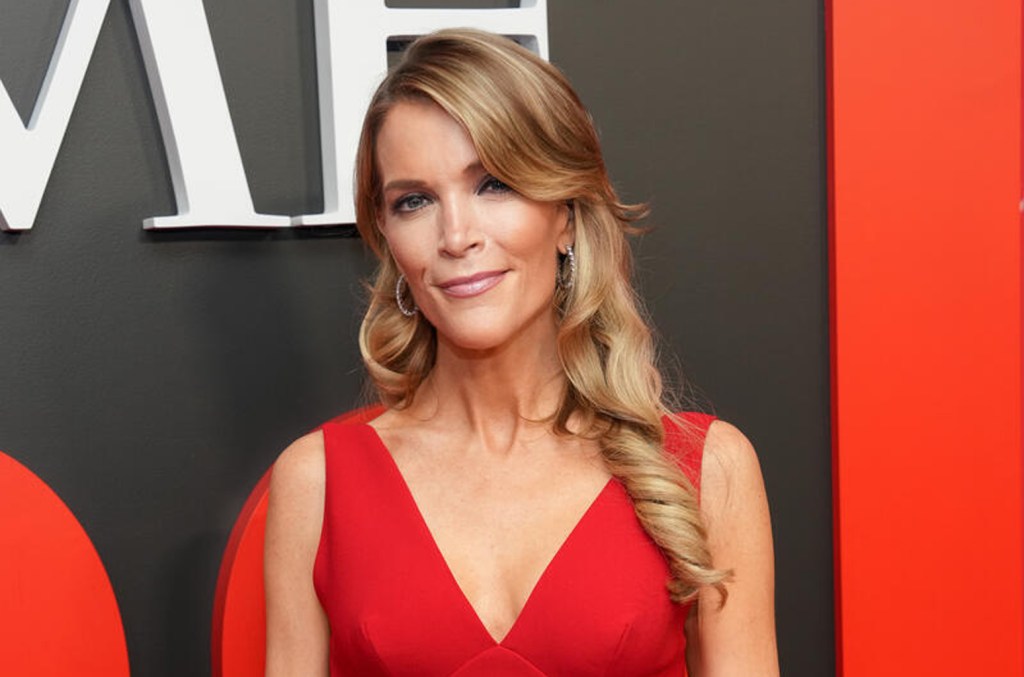
Whether she likes it or not, Megyn Kelly is a part of Beyoncé‘s Cowboy Carter Tour — but that’s not stopping the political commentator from slamming the superstar for including footage of her in the trek’s visuals.
In a recent clip from The Megyn Kelly Show titled “Beyonce Tries Playing Victim,” Kelly said it had recently come to her attention that “Beyoncé, who’s on some world tour right now reinventing herself as a country star, is running videotape during the show of yours truly.”
“Here is another one of the most privileged, beloved women in the world — and richest, based on her own fortune, never mind the man she’s married to,” the TV personality continued, referring to billionaire Roc Nation founder Jay-Z. “But [she] still has to look for the one sliver where she could play the victim and be aggrieved because big bad Megyn Kelly said something completely milquetoast about her entry into country music.”
Trending on Billboard
Billboard has reached out to Bey’s rep for comment.
Kelly’s remarks come more than a month after the Destiny’s Child alum kicked off her world tour in support of Billboard 200-topping album Cowboy Carter, which found Bey exploring her love for country music across 27 tracks, including collaborations with icons such as Willie Nelson and Dolly Parton. At a certain point in each show, a blurred-out clip of the former Fox News anchor blasting Bey for “sticking her big toe” into country music during an appearance on Australia’s Sky News plays on venue screens.
The moment in the show is representative of how many people were critical of the 35-time Grammy winner for experimenting with country music once Cowboy Carter dropped in March 2024. Many parts of the industry were unwelcoming — the album earned zero nominations at the CMA Awards and country radio did not embrace any tracks — but Bey would become the first Black woman to ever reach No. 1 on the Hot Country Songs chart with lead single “Texas Hold ‘Em.” Cowboy Carter also took home both album of the year and best country album at the 2025 Grammys.
But despite Bey’s success since the last time she spoke on the subject, Kelly doubled down on her early criticism of Cowboy Carter. “She and her marketing people were treating that entry [into country music] like the second coming, like it’s Jesus incarnate,” she added on on The Megyn Kelly Show. “‘All hail Queen Bey, she’s here to rescue country music,’ which was a perfectly thriving industry long before Beyoncé showed up.”
Following stints in Los Angeles, Chicago and the New York City area throughout the month of May, Bey is now gearing up to bring her Cowboy Carter trek to London for a string of shows at Tottenham Hotspur Stadium kicking off June 5. Her five-night stay at SoFi Stadium in Inglewood, Calif., grossed $55.7 million with 217,000 sold, marking the biggest single-venue engagement reported to Billboard Boxscore in 2025 so far.
Kelly’s complaint about the Sky News footage isn’t the first instance of someone taking issue with the Cowboy Carter Tour visuals, however. In May, attorneys for Sphere Entertainment Co. CEO James Dolan sent Bey a cease-and-desist for using imagery of the Las Vegas Sphere in a video interlude, after which the musician cheekily superimposed the city’s Allegiant Stadium over the first venue in the visual.

 State Champ Radio
State Champ Radio 
